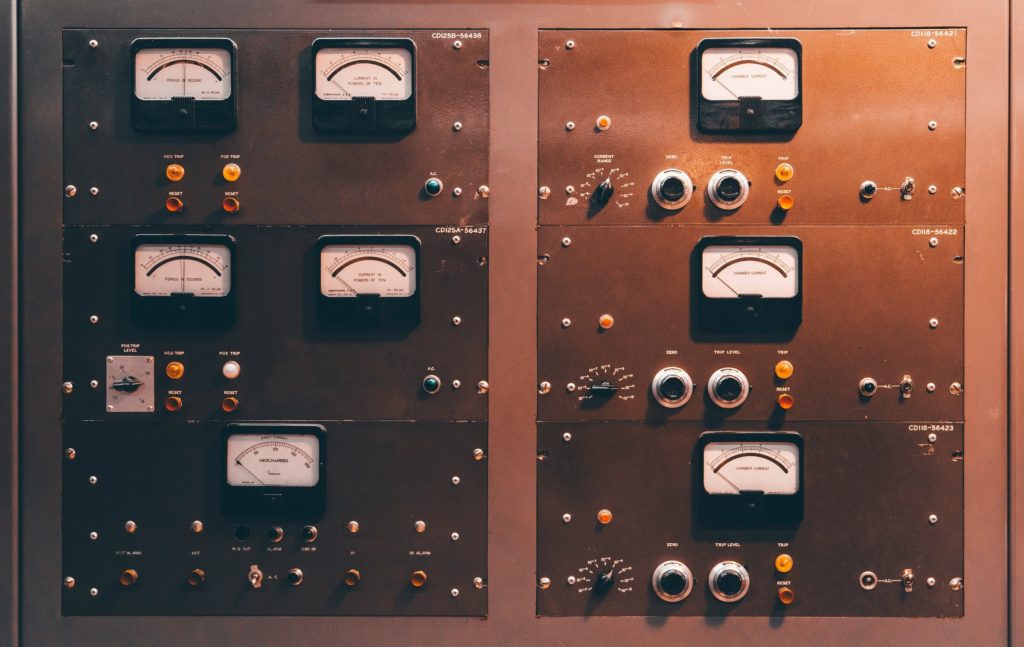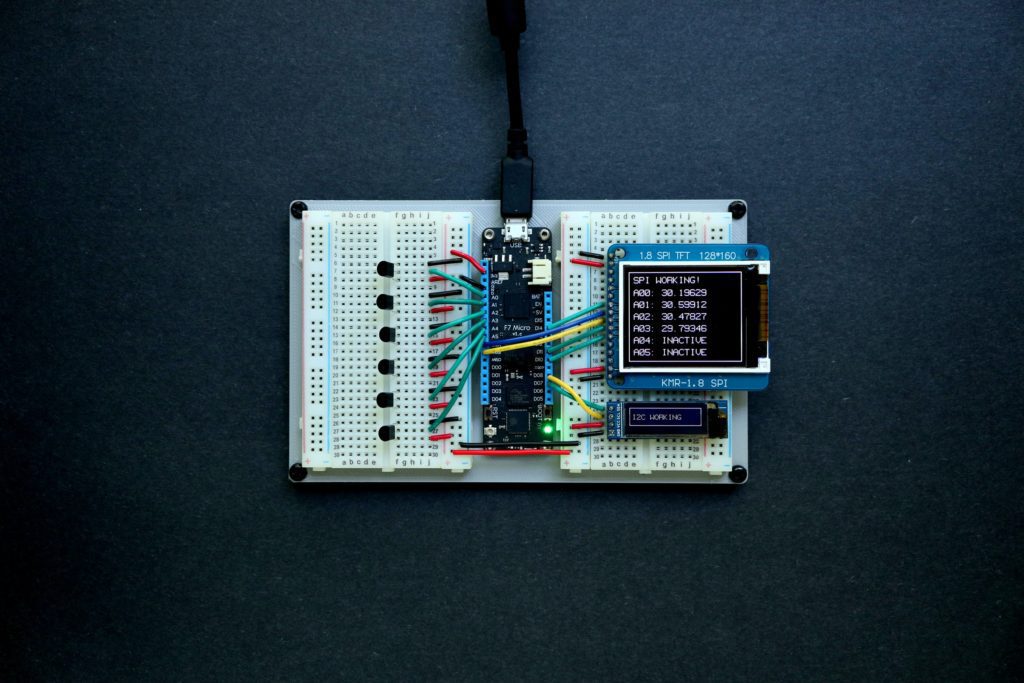06/21/2022 | Water Measurement Tips & Tricks | 8 MINUTE READ
What’s the Difference Between Analog and Digital Sensors?

A signal may fall under two categories, which include digital and analog. A signal involves information being transmitted between two separate electronic devices. Keep in mind, however, that signals aren’t associated specifically with electronic devices. Signals also occur with standard thermometers when a temperature is displayed via the expansion or contraction of mercury.
An analog signal is a continuous signal where the solution will vary based on the time at which the signal is displayed. An example of an analog signal involves the human voice. As for digital signals, these are considered to be discrete signals that are typically comprised of two values, which are low and high. What sets these signals apart? What types of applications can these signals be used for? All of these questions are answered in the following.

Digital Sensors
As mentioned previously, digital sensors produce a discrete digital voltage or signal that is considered to be a digital representation of a measurement. This sensor will display binary output in ones and zeros. Digital sensors tend to be considerably less expensive when compared to analog ones. These sensors are known to have a fast transmission rate as well as negligible distortion.
The main reason that many people prefer using digital sensors is because they don’t have the same limitations as analog sensors. Keep in mind that digital sensors are commonly used across such applications as wastewater treatment, water purification, and similar industrial processes. If you decide to purchase a digital sensor of any kind, the item should be comprised of a sensor, a transmitter, and a cable.
What Can Digital Sensors Measure
Among the most common measurements that can be recorded by a digital sensor include conductivity, pH levels, ammonium concentration, nitrate concentration, and dissolved oxygen. While standard digital sensors provide accurate results, a more advanced type of digital sensor is oftentimes referred to as a smart sensor. Smart sensors are used to modernize and streamline measurements through digital and wireless communication.
A smart sensor is a more modern and feature-intensive version of a digital sensor. In most cases, smart sensors will provide the user with more precise and fully automated collection of data with a lower chance of errors. These devices are commonly used for monitoring purposes. Smart sensors can be positioned in such environments as exploration, smart grids, and water treatment.
The base parts of a smart sensor include a microprocessor, a sensor, and some type of communication technology. Compute resources are required in a smart sensor. If the sensor is only able to send data to another location for remote processing, this isn’t enough to be deemed a smart sensor. Some of the additional components that could be outfitted in a smart sensor include amplifiers, analog filters, and transducers. These sensors tend to incorporate software elements into the design, which facilitate functions like digital processing, communication, and data conversion with external devices.
The five types of smart sensors that are commonly incorporated into industrial environments include:
Level Sensors
These are sensors that can measure how much volume space takes up in a container of any size. For instance, the fuel gauge in a car could be connected directly to one of these sensors, which will monitor how much fuel remains in the tank.
Pressure Sensors
These sensors are typically used to monitor fluid and gas pressure in a pipeline. In the event of a quick drop in pressure, the sensor will send out a warning, which indicates to the facility that there is a flow control problem or a leak of some kind.
Temperature Sensors
These sensors are designed to monitor the temperature of a component to determine if and when corrective actions may need to be taken. When looking specifically at industrial settings, temperature sensors are commonly used to keep machinery and equipment from overheating. Without equipping the machinery with a digital temperature sensor, there would be very few signs of overheating.
Infrared Sensors
Digital infrared sensors can come in several different forms. Some of these sensors are outfitted with non-contact infrared thermometers or thermal imaging cameras that are typically applied with temperature monitoring. On the other hand, certain infrared sensors are used as optical sensors that are tuned to a specific frequency. At this frequency, the sensors can view light on the infrared spectrum. This type of infrared sensor is mainly used in different types of medical equipment, the primary of which include pulse oximetry devices.
Proximity Sensors
Proximity sensors are designed for detecting the location of an object or person as it pertains to the sensor itself. When used in a retail store, proximity sensors are able to track the movements that customers make within the store.

Analog Sensors
Analog sensors are much different than digital sensors and typically have less features. These sensors create what is known as an analog signal, which is a continuous signal that represents a quantity. An analog sensor trades efficiency for a more continuous and slightly more accurate signal. While the feature-set of an analog sensor won’t match that of a digital sensor, you can be more confident in the readings you obtain.
The analog quantities that are known to be continuous in nature include speed, pressure, displacement, strain, and temperature. For instance, you can use a thermometer to measure the temperature of a liquid. By obtaining continuous readings, the analog sensor will respond immediately to any changes that occur in the temperature of the liquid as its heats up or cools down.
While there are many types of analog sensors, among the most common type is a pressure sensor, which is commonly used in industrial and lab settings to manage the pressure of liquids or gases. Pressure is typically measured by identifying the force per unit area. These sensors will act as transducers by generating a signal when pressure is imposed.
A pressure sensor is used to monitor and control hundreds of applications. Facilities can also use these sensors to indirectly measure such variables as gas and fluid flow, water level, speed, and altitude. Keep in mind that pressure analog sensors may also be referred to as pressure transducers, pressure senders, pressure transmitters, and pressure indicators.

Analog vs. Digital Sensors
To better understand the many differences between analog and digital sensors, it’s essential to compare the types of settings and environments these sensors work best in. While analog sensors are known for their accuracy, the enhanced efficiency of digital sensors has pushed many companies and facilities to transition over to digital measurements. Along with the signal speed limitations that analog sensors have, these devices are becoming less common in the market because of their noise issues.
Despite the various limitations associated with analog sensors, they are still the primary sensor of choice for certain applications. The reason that analog sensors are still preferred in some scenarios is because of the fidelity and strength of their signals. For instance, analog recorders are preferred over digital recorders when it comes to audio recording. While digital recorders are able to produce somewhat strong audio, the quality and depth of the audio doesn’t match what you would hear with analog recorders.
When taking digital sensors into account, the signal a digital sensor produces is preferred for smartphones, digital electronics, and computers. Digital sensors are able to process data in megabits or gigabits. This data allows for the measurement of digital electronic devices and their capabilities. The reason that digital signals and sensors have been widely adopted is because of their noise immunity and quick data rates.
Sensors are able to measure a specific physical quantity before responding to this quantity. This response comes in the form of an output, which could be a voltage. Analog sensors create analog signals from the quantity that is sensed. In comparison, digital sensors produce digital signals when performing a measurement.
As mentioned previously, the most common types of analog sensors include sound sensors, light sensors, temperature sensors, and pressure sensors. Keep in mind that there can also be digital versions of temperature and pressure sensors. When you’re searching for the right sensor, you should first identify what type of application you require the sensor for.
What Sensor is Best for Testing pH
In the event that you are testing the conductivity or pH of water, a digital sensor may be preferable if you want to obtain instant results. Digital sensors are ideal for any projects that only require two voltages. However, an analog sensor may be the best choice if you need to obtain continuous signals.
Digital sensors have and will likely continue to become common place across most industries for the foreseeable future. Even though analog sensors can produce more accurate readings from time to time, there’s always a possibility of noise being introduced into the input, which would lead to inaccurate readings. As long as you have a clear understanding of what application you require the sensor for, you should have the information you need to determine which type of sensor is right for you.
Posted by Dominic O'Donnell on June 21, 2022
Sensorex is a global leader in the design and manufacture of quality sensors for water quality and process applications. The company offers more than 2000 sensor packages for pH, ORP, conductivity, dissolved oxygen, free chlorine, chlorine dioxide, UV transmittance and other specialty measurements, as well as a full line of sensor accessories and transmitters. Its expert technical support engineers solve analytical sensor challenges with custom designs and off the shelf products.




